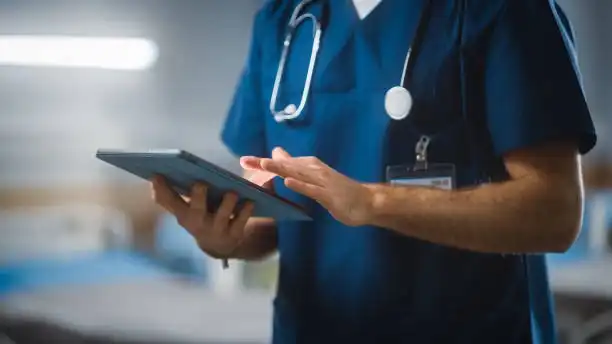There are a number of different forms of headache that can cause pain on top of the head.
What Does a Headache on the Top of Your Head Mean?
There’s no one-size-fits all way to know why you got a headache in a certain place. Different people may experience headaches differently, including in where they strike and how intense the pain is. Pain on the top of your head could mean a number of things, and you’ll want to watch for other symptoms that may suggest what’s going on and the reason for it.
Tension Headaches
It’s not always clear what causes them. But it may be that tension builds in your muscles when you hunch over your computer for hours or pin your phone to your ear with your shoulder. Or perhaps you tense the muscles in your neck, face, jaw, and scalp because of stress or anxiety.
A hot shower, warming pad, and over-the-counter meds can help. Regular exercise along with meditation and other relaxation approaches might stop tension headaches before they start.
Migraine
A throbbing pain starts small and builds, sometimes to very high intensity. It’s usually on one side of the head, but it may also include some or all of the top of your head. Everyday movements, like house chores and walking, can make it worse.
During a migraine, you may be more sensitive to light, noise, and smells, and you could get nauseous enough to vomit. Another common sign is an “aura” that looks like flashing lights or waves that you see just before or during a migraine.
It’s often hard to tell what causes a migraine, but doctors do know of some triggers: Hormone changes, stress, anxiety, sleep problems, strong odors, tobacco, and missed meals. Trigger foods include coffee, wine, chocolate, aged cheeses, pickled goods, and processed meats. Talk to your doctor about lifestyle changes that can help lessen or prevent your migraines.
When you have a migraine, resting in a quiet, dark room can help bring relief. It also might be good to drink some caffeine and get plenty of fluids, especially if you’re vomiting. Your doctor might suggest or prescribe medication that will work best for you.
Cluster Headaches
The “cluster” refers to the way they repeat, almost daily, sometimes for weeks at a time.
These headaches tend to be very painful, on one side of the head behind the eye, and happen at the same time of the day. Though the pain doesn’t usually start on the top of the head, it could radiate there as the headache gets worse.
You may have a migraine-like aura and nausea just before each one. Pain usually peaks 5-10 minutes after it starts and can last up to 3 hours. Your nose and eye may get red and swollen on the headache side, and you may be anxious and sensitive to light, sounds, or smells.
The cause usually isn’t clear, but sleep problems, alcohol, and smoking set off these headaches in some people. You may also be more likely to have cluster headaches if you’ve had a head injury before. Talk to your doctor about treatment.
Secondary Headaches
“Secondary” means that some other problem caused your headache. There are many reasons, such as a fever, infection, high blood pressure, head injury, and mental or emotional problems.
Most headaches aren’t due to an emergency condition, such as a bulging blood vessel in the brain (aneurysm). But call 911 if you get a sudden headache with no obvious cause that’s extremely intense. It might be a sign the aneurysm is leaking or has burst (called a hemorrhagic stroke). If you think it might be a stroke, remember FAST: Face drooping, Arm weakness, Speech problems? Time to call 911. You should also get emergency care if you:
- Have a stiff neck along with your severe headache.
- Have had a head injury
- Pass out
- Have blurry vision
- Feel dizzy, confused, or nauseous
Show Sources
American Stroke Association: “Stroke Symptoms.”
Johns Hopkins Medicine: “Headache.”
Mayo Clinic: “Tension headache,” “Brain aneurysm,” “Headache: When to see a doctor.”
National Institute of Neurological Disorders and Stroke: “Headache: Hope Through Research.”
Sait Ashina, MD, Beth Israel Deaconess Medical Center; assistant professor of neurology, Harvard Medical School.
CDC: “Meningococcal Disease.”
Headache on the Top of the Head
Pain at the top of the head can be caused by a variety of different types of headaches including tension headache and migraine.
Headaches are never fun, and each type of headache can produce its own unique symptoms. Headaches that occur on the top of the head may cause the sensation of having a heavy weight placed on the crown of your head or a tight band across the head.
Identifying exactly what type of headache you’re experiencing is crucial to finding the right treatment and getting relief.
Several different conditions can cause headaches on top of your head. These can include different types of headaches, nerve issues, and more rare causes.
There are a number of different forms of headache that can cause pain on top of the head.
Tension-type headaches
Tension headaches cause constant pressure or aching around the head, which may feel like a tight band has been placed around the head.
You may also feel pain in your neck and near the back of your head or temples. The pain is dull and doesn’t throb, and it’s often much less severe than that of a migraine. Although these headaches are uncomfortable, many people with tension headaches are able to resume their typical activities.
Episodes of tension-type headaches can last from about 30 minutes to 1 week .
Migraine
Migraine is a neurological condition that causes severe and debilitating headaches. It may cause headache pain on the top of the head, though it may also appear on or travel to one side of the head or the back of the neck.
Migraine can cause severe throbbing pain , along with symptoms that can also include:
- light sensitivity
- sound sensitivity
- nausea
- vomiting
- auras, or visual disturbances
Migraine can be episodic or chronic, depending on how often the headache attacks occur.
Cold-stimulus headaches
Cold-stimulus headaches — commonly known as “brain freezes” — come on quickly and are felt near the top of the head. They will be severe, and typically only last a few seconds. They may occur after you eat or drink something cold, such as ice water or ice cream.
Chronic headaches
Chronic headaches occur when a person experiences headaches for 15 or more days of the month. This is an umbrella term that doctors use to refer to multiple conditions.
Chronic headaches can come in many different forms. These can include:
- migraine, which can be chronic or episodic (occurring less frequently)
- tension headache
- cluster headaches, which are severe headaches that occur in clusters followed by headache-free periods
- new daily persistent headache, a rare headache condition that is not caused by another disorder
- hemicrania continua, a severe headache that occurs on one side of the head
Occipital neuralgia occurs when the nerves that move from the spine to the scalp are damaged, irritated, or compressed. They can cause pain at the back of the head, or a tight, band-like feeling around the top of the head.
Other symptoms can include:
- jolts of pain that feel like electric shocks
- dull aching
- symptoms that increase upon movement






